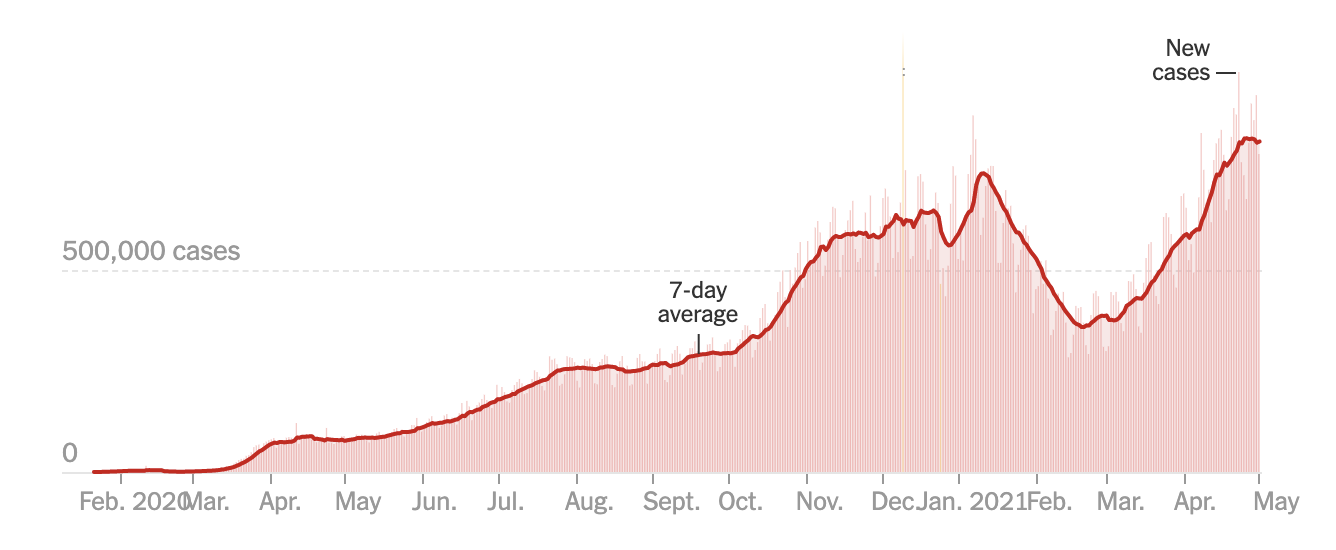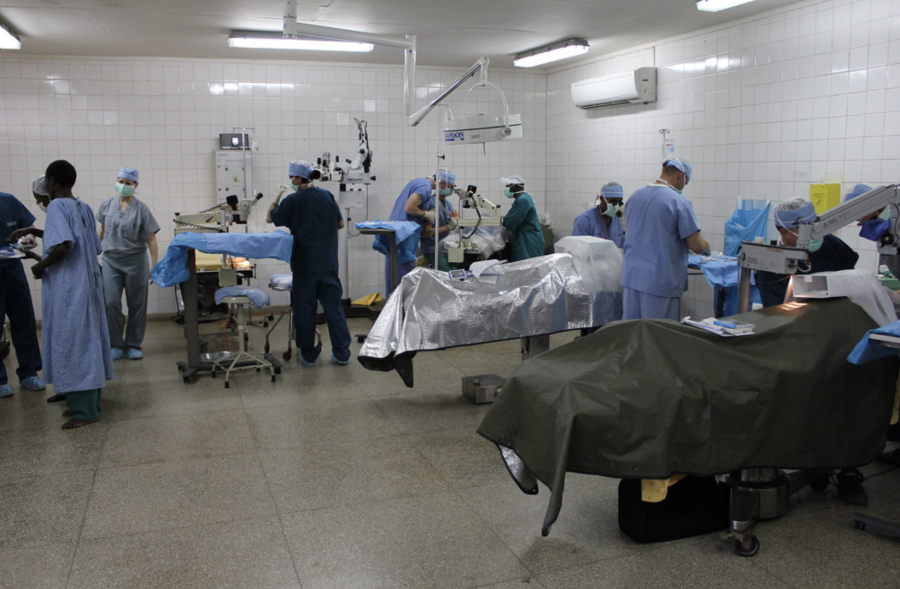As the U.S. continues to vaccinate its population at extremely efficient rates, cases around the globe are surging, mostly driven by India and South America. India, a country with a population of nearly 1.4 billion, is seeing daily case counts higher than any other country at any point in the pandemic.
On Sunday, May 2, India broke another world record with over 400,000 new daily cases, alongside over 3,000 daily new deaths. According to The New York Times, last week Latin America accounted for 35% of all coronavirus deaths in the world, despite having just 8% of the global population.
Earlier last year in the beginning stages of the pandemic, experts warned that an “outbreak anywhere is a risk everywhere.” Despite the U.S. finally getting a handle on the pandemic within its borders, the state of India and South America is a valid concern.
According to the University of Oxford’s project, Our World in Data, less than 10% of India’s population has received at least one dose of the coronavirus vaccine, compared to over 44% of the U.S. population who has received at least one dose.
One of the reasons that South America has been hit so hard is due to the presence of the P.1, or Brazil, variant, which has been shown to evade our current vaccinations to some extent, albeit not very well. In Brazil, less than 14% of the population has received at least one dose of the vaccine.
RELATED: What have we learned about the coronavirus in the past 15 months?
Currently, global coronavirus numbers are averaging over 800,000 per day and deaths are hovering around 14,000 per day. Prior to this peak, the most recent one was at the beginning of this year in January where the seven-day average for cases was around 750,000.

The rife coronavirus variants throughout India have made the country’s battle against COVID-19 all the more difficult. Alongside a high prevalence of the B.1.1.7 variant, first identified in the U.K., a homegrown variant — B.1.617 — has emerged in India.
Despite the misnomer “double mutant,” the B.1.617 variant has a number of different mutations that, based on preliminary evidence, suggest that it is more contagious than previous strains of the virus. According to a study published in the journal Cell, the L452R mutation may enhance the ability of viruses to infect human cells in the laboratory.
The U.S. has turned around its coronavirus numbers this year; however, the fact that other countries around the globe are seeing new heights of cases and deaths means that our sense of normalcy could be delayed because an “outbreak anywhere is a risk everywhere.”
Follow Amit Syal on Twitter









